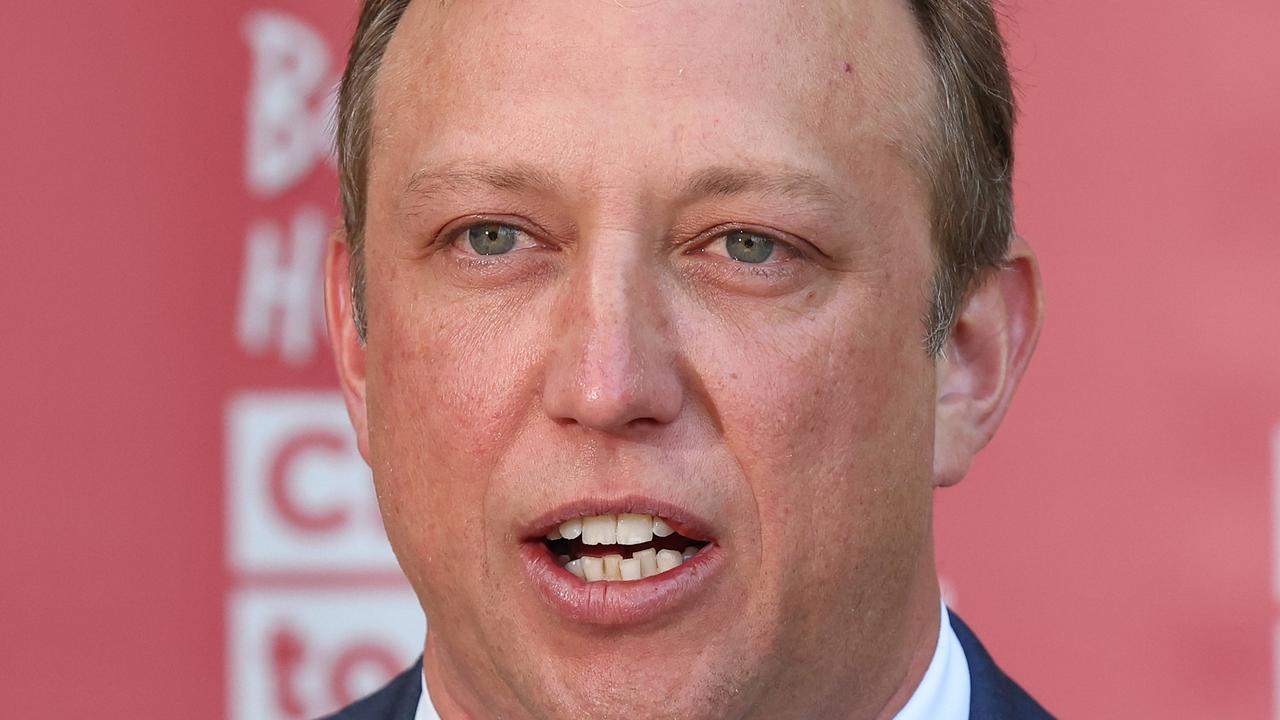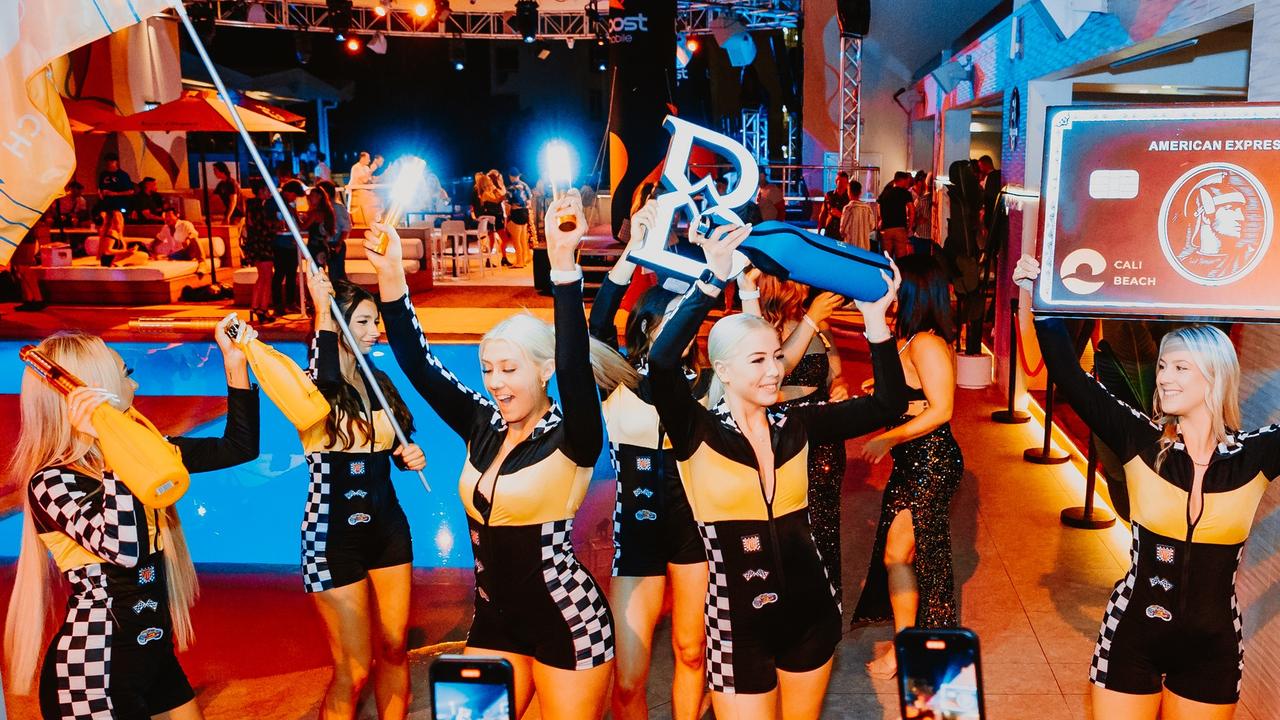Ann Wason Moore: Truth about homelessness on Gold Coast
Government forms and funding are helpful in addressing homelessness, but they are not the full answer, writes Ann Wason Moore. JOIN THE CONVERSATION
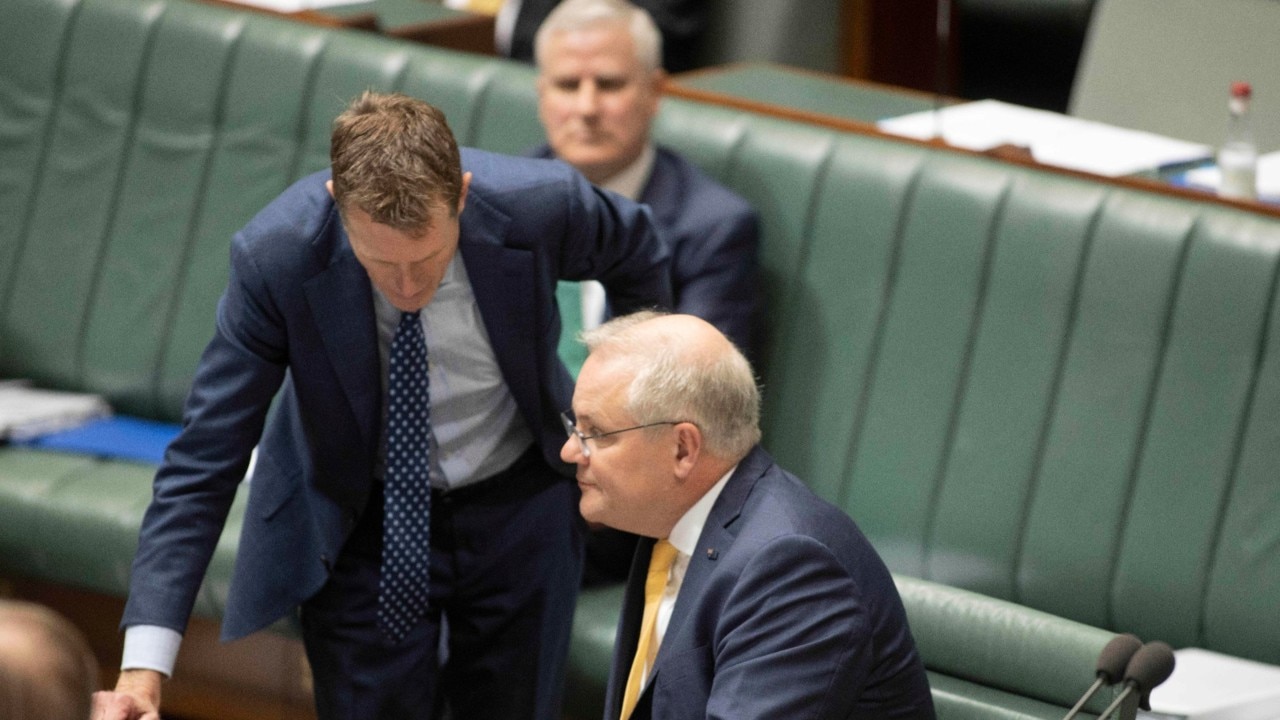
Gold Coast
Don't miss out on the headlines from Gold Coast. Followed categories will be added to My News.
It's time to face some home – or homeless – truths.
JobKeeper is over, property prices and rents alike are skyrocketing and, down in Miami, there are mattresses scattered among the sand dunes … a tangible distress signal of the housing crisis facing the Coast.
It’s not that our city has never had homelessness before, but most residents weren’t confronted by it in their daily lives.
And so, because it wasn’t a problem for us, we deemed it not a problem … as wrong as that may be.
But how times have changed. As our population grows, so too does our homeless population. So too does our population of people dealing with trauma, abuse, addiction … all of the triggers that can lead to the streets.
And as Mahatma Gandhi once said, the true measure of any society can be found in how it treats its most vulnerable members.
So how do we measure up?
In government, both local and state, there is much talk of affordable housing, counselling and rehabilitation programs.
But what about action? What are we actually doing?
Well, perhaps our leaders should follow in the footsteps of Gold Coast resident Anthony Grech.
A few years ago, Anthony noticed a man sleeping outside Chevron Renaissance in Surfers. At first Anthony was wary of this man and kept his distance.
But over time, he began speaking to him, and so began the story of brotherly love between Anthony and Dave Randall.
“As I got to know Dave, I’d bring him clothes and take him for showers and get him cleaned up … and he just transformed from a scared and scary guy to someone who was smiling and loving life,” says Anthony.
“More people started talking to him too and donating things. It was amazing seeing the community come together and seeing the change in Dave as he felt accepted.”

Alas, as the Bulletin reported in September last year, when Dave was forced to relocate under the Chevron Island bridge, the council mistakenly threw out all of his belongings.
But, once again, spearheaded by Anthony, the community stepped in to help.
“We raised $4000 in 24 hours, put it into an account for Dave and then worked with the government to get him a house.
“But just assigning him a house wasn’t enough. I had to really take the time to work with Dave and explain why this move would be good for him, leaving the streets after seven years isn’t as easy as you would think. Dave’s mental health is not 100 per cent so you really have to be aware of that.
“Now he’s doing great. We have pizza together every Wednesday night and he comes with me on Saturdays to help cook barbecues for the homeless, he’s become a part of the community – not apart from the community.
“He’s paying it forward now. He’s part of the solution and because of his own lived experience, he’s someone who people on the streets will really listen to.”
The story of Anthony and Dave shows that while government forms and funding are helpful in addressing homelessness, they are not the full answer.
Indeed, there was both money and an actual home already allocated to Dave, but those government ‘gifts’ were futile until Anthony’s assistance made them accessible.

Battling homelessness takes more than programs and projects and grants … it takes an awful lot of human connection and human care.
“It’s all about consistency of care,” says Anthony. “I can’t just leave Dave on his own now he has a home – he needs checks to make sure he’s taking his medication, he needs that consistent connection. It takes more than a social worker with a clipboard ticking off the boxes.
“What we need is people who will take the time to care, who can lift people up and get them off the street.
“My dream is to have a little army of people with me, whether through council or the state government, who can connect with these people and then connect them to help – to fill out the forms for them, to introduce them to the people at hostels and churches and rehabs, to be their sponsor in a way. To be their friend.”
Indeed, while it’s impossible for our local and state leaders to literally and physically follow in Anthony’s footsteps … they could perhaps pay for others to do so.
Anthony himself is on Jobeeker. The small amount of money he receives is spent on his work in the streets.
Imagine what he could do if this was not just his calling but his job. Imagine if we had an army of Anthonys.
Of course there are others just like Anthony, not to mention the many charities who do amazing work for our city. But volunteering and donations can only go so far … perhaps it’s time to formalise this workforce of helpers.
Think of the benefits not just for the homeless themselves, but for our community at large.
It takes a village, and we need to be that village – for our vulnerable and for ourselves.
GOLD COAST'S ART: TRASH OR TREASURE?
Gold Coast, are we just a city of uncultured swine?
Sure, we bristle defensively whenever a southerner dares to describe the Coast as a cultural desert … but we certainly don’t seem to appreciate any attempts to create an artistic oasis.
While the City of Gold Coast has persisted with its vision of creating a cultural heart with its HOTA masterplan, it’s frequently been forced to swim against the tide of public opinion.
There’s the colourful art gallery itself, described by our own readers as: a “demented Rubik’s cube”, “an overgrown childcare centre”, “horrid”, “an eyesore” and “a garish building with no sophistication or class”.
Then there’s the newly revealed sculpture made of bronze, concrete, neon and fibreglass that will dominate the entrance to the gallery when it opens in May.
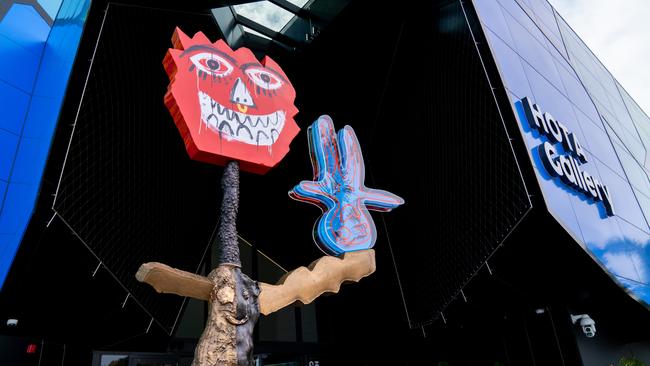
Created by Sydney-based Sri Lankan artist Ramesh Mario Nithiyendran, the 6m-high artwork has been welcomed by residents as: “a poor giraffe who has had a huge shock and turned multi-coloured”, “an insult to ratepayers and an embarrassment to the GC” and “something my three-year-old would draw”.
But isn’t this the very point of art?
Surely it’s not supposed to be simply pretty and peaceful decoration but polarising pieces that inspire conversation.
And on this basis, the Gold Coast art scene is nailing it.
In fact, by that standard our greatest hate is also our greatest success.
For all the controversy, criticism and contempt surrounding the Yatala Hi-Lights — aka the mess of M1 median strip traffic lights that spell the city’s name — they sure have attracted a lot of attention.
They may be the art installation we love to loathe, but there’s actually a lot to admire about what this work has given the city.
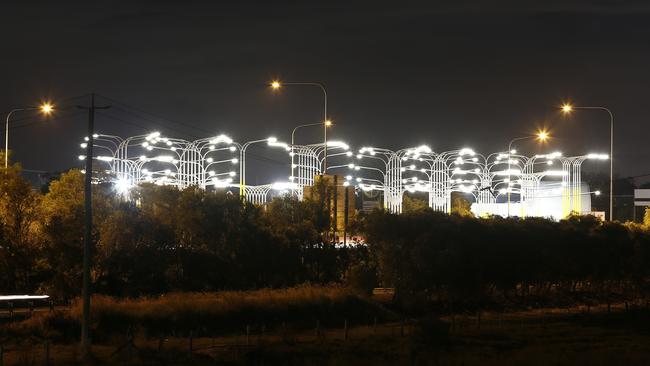
Created by New York-based LOT-EK artists Ada Tolla and Giuseppe Lignano, the $2.1m installation was jointly funded by the Queensland Government and City of Gold Coast as a legacy of the 2018 Gold Coast Commonwealth Games — meaning we residents footed only a portion of the bill.
As part of their winning bid, these international artists were also responsible for mentoring emerging artists from the Gold Coast, creating work in terms of employment as well as works in terms of future art, while local manufacturers were involved in the creation of the artwork itself.
But aside from its economic and cultural attributes, best of all is the extreme delight we residents take as we introduce visitors to this installation as we travel along the M1.
“Look at this hot mess,” we scoff. “It’s meant to say ‘Gold Coast’. How the $%#@ are you meant to be able to read that?”
And thus begins one more round of “they call that art?”
It’s a joy that never grows old.
Indeed, I have a sneaking suspicion that Yatala Hi-Lights will grow into a landmark that we truly love … because of its very ridiculousness.

Like the Big Banana, the Big Pineapple and the Big Prawn, this is our very own Big Mess.
And on a practical note, those extra lights sure are handy on a rainy day.
Besides, what’s to stop us making this into something more relevant to residents? The truth is that this sculpture was never meant to be read while travelling at 110km/h down the M1 — as council well knew.
“Our proposal showed the work as it was built – both in renderings and an actual animation,” said Hi-Lights artist Ada Tolla.
“The sculpture was meant to be experienced in motion, in one direction and then reverse, depending on the direction of traffic. It was never envisioned as a ‘sign’ to be seen straight on.”
But if we so badly want to read that welcome sign, why not look into creating viewing platforms in the Hinterland or surrounding suburbs? Like a modern-day inspiration point for young lovers, we could drive into the hills to see the sign in all its legible glory.
As a work of legibility it might have failed, but Yatala Hi-Lights has succeeded in starting conversations … because it’s art, not decoration.
The beauty of art is that there is no right or wrong, no definitive beautiful or ugly — one person’s trash is another’s treasure. One person’s Jackson Pollock is another’s toddler scribble. One person’s demented Rubik’s Cube is another’s art gallery.
Art is simply a matter of perspective.
We’ve spent so long studying our city’s artistic contributions in a negative light, maybe it’s time to try a positive viewpoint. We don’t have to love the art itself, but what it does for our city.
‘So stupid’: Coast jab lands on chin of national leaders
AMAZING the things you learn from Year 7 homework.
Harassed into helping my daughter with an English assignment on the theme of courage this weekend, we brainstormed what exactly that word means.
After a lot of whine (hers), followed by a lot of wine (mine), we agreed that courage means overcoming fear to do the right thing.
And as my daughter defined her terms, I realised that this 11-year-old girl already comprehends the necessity of a moral compass better than most … at least judging by the news headlines.
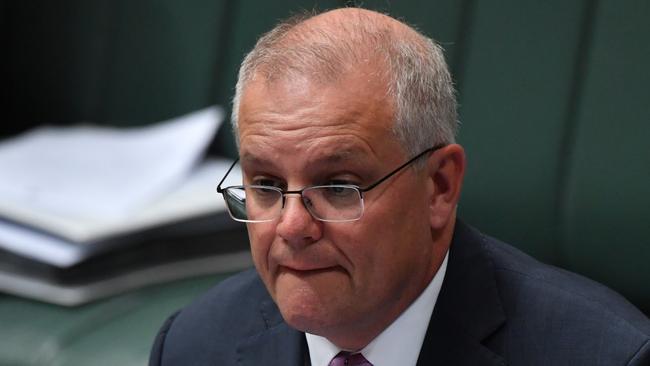
Because all weekend, I’ve been wondering how our leaders can be so stupid that they don’t realise the right thing to do.
But as I read through that Year 7 homework, I understood that, actually, they do know precisely what the right thing is … they just don’t have the courage to do it.
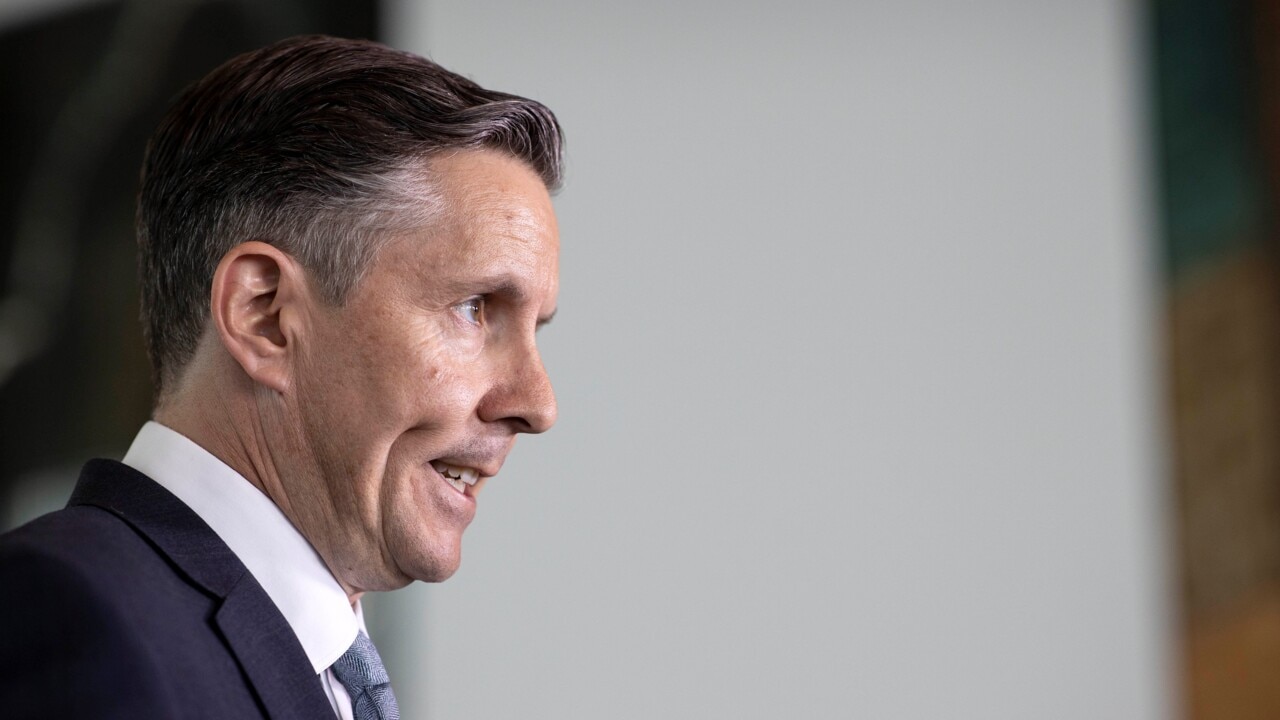
Let’s start close to home, how could our country’s leader choose not to join the Women’s March 4 Justice?
The protest marches were held across Australia yesterday as the outcry against violence against women, sexual misconduct and misogyny echoes across the country, with the nation’s focus on the march at Canberra’s Parliament House.
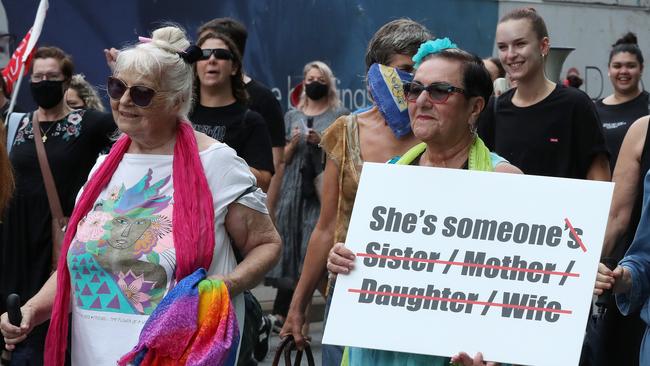
Every member of federal parliament was invited to attend, but both Prime Minister Scott Morrison and Deputy Prime Minister Michael McCormack immediately replied they would be too busy to attend.
Mr Morrison told the media on Sunday he would not go because “when you’re prime minister in Canberra, it’s a very busy day”.
Patronising much?
Meanwhile, Minister for Women Marise Payne said she would only receive a petition from the protesters, which includes demands for independent investigations into cases of gendered violence and the full implementation of the Australian Human Rights Commission’s Respect at Work report, “via correspondence” rather than in person.
After harsh criticism, both offered to meet up to four of the protest organisers in the Prime Minister’s office on Monday afternoon. Organiser Janine Hendry rejected that offer, saying: “We have already come to the front door, now it’s up to the government to cross the threshold and come to us. We will not be meeting behind closed doors.”
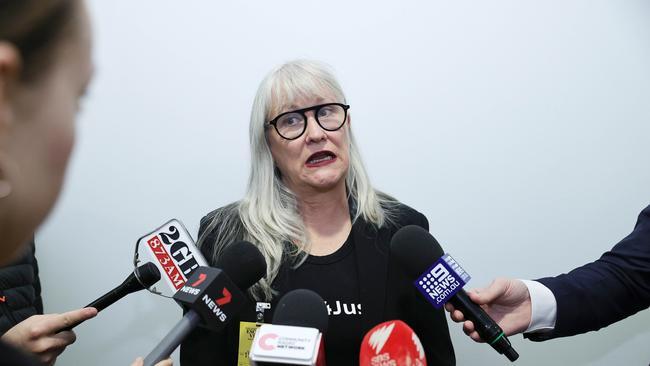
Damn right. The rage being felt by women across this country is precisely because all of these things keep happening quietly, privately, behind closed doors … where justice is never seen because it never occurs.
It’s so obvious that the right thing to do for the Prime Minister is to step outside and stand with these women – and the men who are supporting them – to show that there is action behind the talk of stopping violence, sexual misconduct and misogyny.
Would he face criticism? Would there be cries of hypocrisy? Would it be uncomfortable? Heck yes. But doing the right thing is not meant to be the easy thing.
I’ve done my homework (or at least supervised my daughter’s), I know that it takes courage. And the PM has proved himself a coward by choosing power over people.
But perhaps he, if not we, can take comfort in the fact that he is not alone.
Over in the UK, women flooded London’s Clapham Common after a police officer was charged with the murder of 33-year-old woman Sarah Everard.
Clutching flowers, candles and signs, mourners were deemed to be in breach of COVID-19 restrictions, even after the Duchess of Cambridge Kate Middleton herself visited the vigil earlier in the day – not even wearing a mask.
Despite their peaceful assembly, a swarm of police officers – from whose own ranks the alleged murderer belonged – violently clashed with mourners in a bid to enforce COVID rules.
Those present filmed and photographed the police response, with harrowing images showing women scuffling with officers and being pinned to the ground, handcuffed and dragged away.
The actions of the police have been widely condemned across the UK, except – of course – by police commissioner Dame Cressida Dick.
Indeed, she is resisting calls to resign over the scandal and doubled down on the police crackdown, insisting that “unlawful gatherings are unlawful gatherings”.
That’s not bravery, but the definition of cowardice – throwing your sisters under the bus to save your own skin.
So while my daughter’s homework may well be done (and hopefully done well), my work isn’t.
I will not sit idle, or behind closed doors, to silently watch as the world continues to ignore women’s pleas for help.
I will stand up for what is right and call out what is wrong. I will show my daughter – and my son – what courage is, because our leaders will not.
Why Coast needs ban on border closures
After a year of all being in this together, it’s time we are all actually together.
And that means a ban on border closures.
I dread to tempt fate, but it does seem we have Covid under control. Yes, there have been small-scale scares since Melbourne mastered its mass outbreak, but now we’re in a position where cases are consistently negligible, vaccines are being (slowly) rolled out and the Federal Government is literally paying us to travel interstate.
Concerts like Byron Bay Bluesfest and Blues on Broadbeach are back on … and yet other major events are still being cancelled, including all 2021 School Sport Australia National Championships.
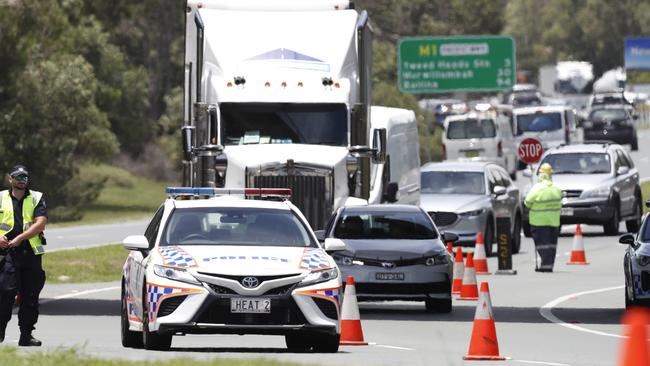
The reason? The looming danger of border closures.
As School Sport Australia announced: “The complex implications caused by the possibility of sudden border closures while teams were out of their home state, weighed heavily on the Board’s decision.
“Several Education Departments are not yet prepared to endorse interstate travel for students and staff.
“This is making it challenging to confirm existing Championship hostings and impossible to secure new dates to reschedule the 27 events on the School Sport Australia calendar for later in the year.”
Those poor kids. You don’t get many chances to compete at that level, and now they’ve lost two years.
And this is just one example of the one obstacle that could undo all of the progress we have made.
Mayor Tom Tate himself yesterday implored Premier Annastacia Palaszczuk not to be ‘trigger happy’ when it comes to closing Queensland, because too much is at stake now.
While Mr Tate said he was ‘jubilant’ at the federal announcement to subsidise half-price airfares to struggling tourist towns, he said the Queensland border had to remain open if the initiative was to work.
“Keep it open … give us certainty and confidence,” he said.
“The will of Australians is that there should be no borders in between us. I know she’s (Ms Palaszczuk) being advised by the chief medical officer but, what do they say? Don’t be trigger-happy.”
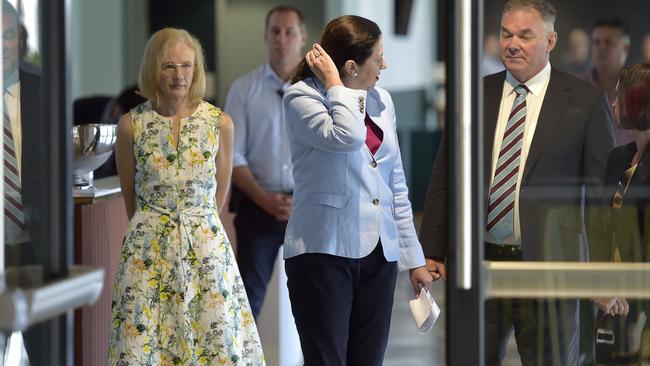
He’s dead right. If we want people to book holidays in our city and support our tourism industry, we have to ensure our door is unlocked.
The constant open/closed status of our states seems to me just another argument to do away with states altogether. Throughout the pandemic, public health could have been just as well managed by identifying and isolating hot spots, rather than a quarter of the country at a time.
FULL DIGITAL ACCESS: JUST $1 FOR FIRST 28 DAYS
Of course I’m absolutely grateful to live in one of the safest cities in the world, but some of our state’s responses have erred on the side of overkill. While other states such as WA seem to see isolation as an opportunity for political point-scoring.
We’re at a point now where we know how this pandemic works and we have some fiercely effective weapons to fight against it.
The last thing I would want to do is to risk public safety, but we’re at a point now where we really need to weigh the consequences of our actions.
Are we more likely to be negatively affected by the Covid infection itself, or by the continued estrangement from friends and family, by our inability to plan for the future, and the consequent financial damage that inertia brings?
This is not a new argument, many said from the start that lockdowns and border closures cause more harm than good. That seemed a dangerous gamble to take in early 2020, but now the pandemic playing field has changed.
Life is returning to normal … except the expectation that this country can remain open and united.
We must face the fact that the threat to public health is no longer our most imminent danger.
If we want to not just survive but thrive, we need to guarantee open borders now.
LAST WEEK: COAST ROBBED OF OLYMPICS JOY
I feel like we’ve been robbed.
Remember back in 1993 and that iconic ‘the winner is Sydney’ moment? The announcement of Australia’s successful bid to host the 2000 Olympics managed to go viral even in those simpler days when the internet was just a sinister sparkle in a troll’s eye.
It was a moment of national celebration, elation and joy.
Fast forward to just over a week ago when southeast Queensland woke to the news that our region has been named the ‘preferred bid’ to host the 2032 Olympics.
I mean, sure, it’s not a done deal … but it’s a pretty frigging big deal.
Not that it seemed that way.
Even international news sites were a little startled by our lack of care factor. “There was no fanfare. No iconic announcement,” was the summary from the (US) ABC.
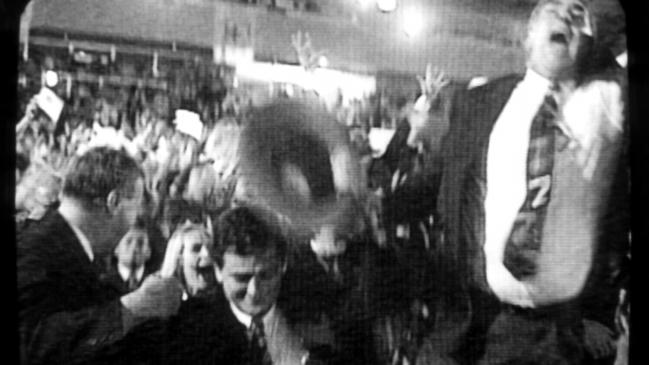
While there’s still time to salvage our reputation as a sports-mad party-loving city (assuming we win the official bid), I can’t believe that - so far - the Commonwealth Games has the Olympics beat when it comes to buzz.
And I’m not just talking about the announcement - or lack thereof - itself. Conducting my own one-woman survey, I’m shocked by how many people’s reaction can be summarised in one word: meh.
There are concerns about cost, concerns about disruption, arguments that our focus should be placed elsewhere. And I understand that … but it’s the Olympics! On the Gold Coast!
Look, maybe this downer demeanour is due to the fact that an official announcement has not yet been made, maybe people are still (understandably) in Covid-mode … it’s hard to get excited about an event eleven years away when we’re still in the midst of a pandemic.
FULL DIGITAL ACCESS: JUST $1 FOR FIRST 28 DAYS
But that hasn’t stopped me - except for when I realised that I’ll be 55 by then.
While many have hailed the Gold Coast’s Comm Games success as a key factor in our region progressing to the point of ‘preferred bid’, I’m wondering if it’s also responsible for our apathetic response.
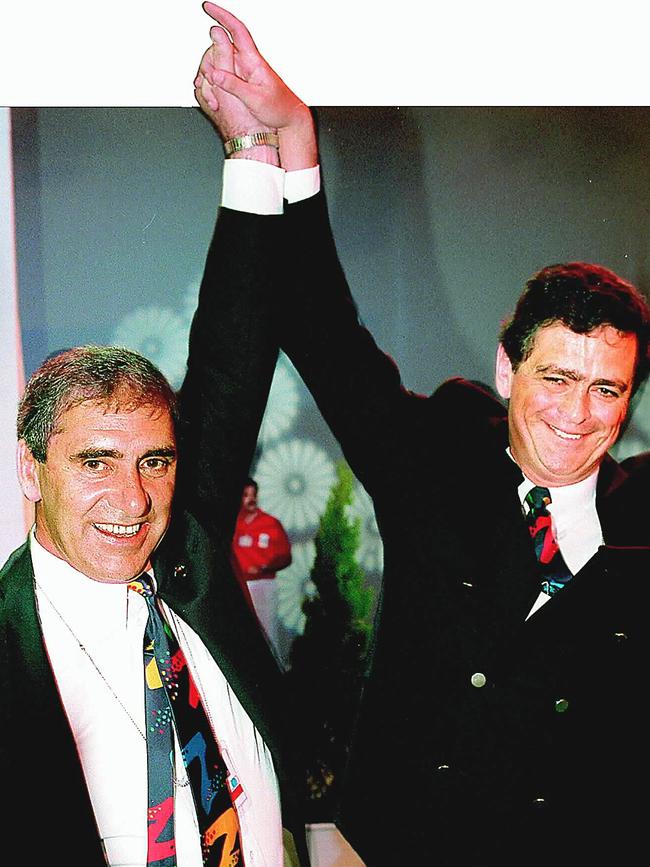
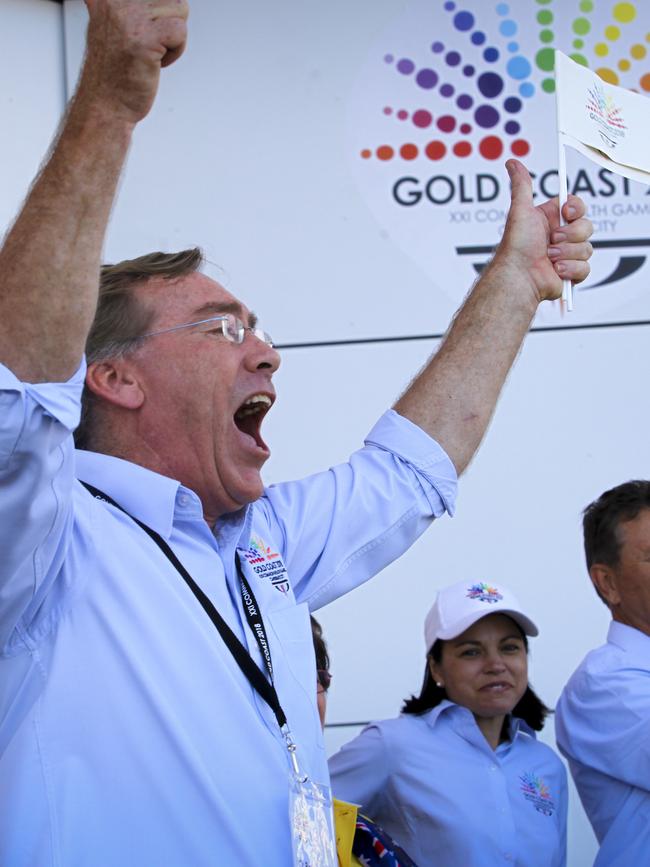
Because as awesome as the Comm Games were as a seamless, professional event, we kind of failed in the festive factor. And while we inherited some fantastic pieces of infrastructure as part of its legacy, we also missed a few tricks.
So let’s take a look at what we can learn - positive and negative - from the 2018 Commonwealth Games:
1. It’s all in the delivery
See above. I distinctly remember the moment on November 12, 2011 when the Gold Coast was announced as host city. There was a watch-party assembled in the Broadwater Parklands where revellers danced, cheered, hugged, and cried as the announcement was televised live on big screens. It was a moment of hope for our town, which was still struggling through the after-effects of the GFC. The Games were billed as something to work towards, something to believe in - and that’s precisely how we should view the Olympics.
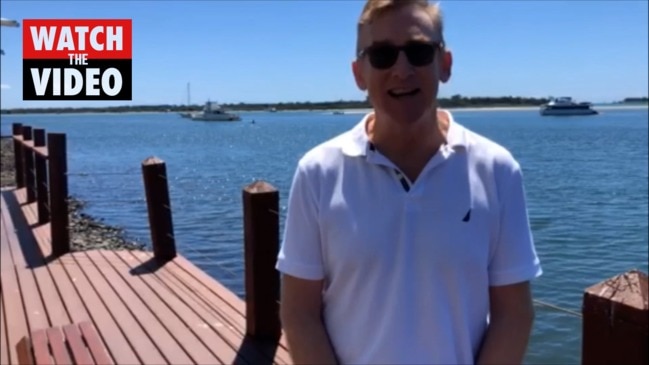
2. Perfection is boring
The trains ran on time, the sporting facilities were spotless, the volunteers were amazing - but the atmosphere outside the actual events was … non-existent. Businesses were told it would be a boom time but residents stayed away and it was a bust. The ghost town scenario has since been the subject of analysis, and the summary is that we over-hyped expectations to the point of scaring the people away from the party. Sometimes, less is more.
3. Building a Village
The Athletes Village at Parkwood was always pitched to later become a hub for affordable housing. Ultimately it became a build-to-rent project called the Smith Collective, which features long-term rental units and plenty of retail and facilities. But what it lacks, according to reviews, is actual affordability. True affordable housing offers sub-market rent, not five-star facilities. The units may be considered a great price for what you get - but apparently it ain’t cheap. As our city spirals into something of a housing crisis, what a pity we didn’t stick to our initial vision, especially as so many of the project’s tenants - international students - have now left the country.
Ultimately the Commonwealth Games was our debut on a limited global stage, and now it looks like we might get the opportunity to take it to the next level - in terms on infrastructure, investment and pure spectacle.
So please, Gold Coast, if we all get behind this bid we can only finish in front.
LAST WEEK:
DEAR God I am tired of the excuses.
More than that, I’m ashamed of our behaviour as residents of this beautiful city who seem to think that it’s for our eyes and enjoyment only.
Every day on community social media pages I read of distraught residents and families searching for somewhere to live in the city they have called home for years. They are living two families in a one-bedroom apartment, they are couch-surfing, they are living in their cars … because we do not have enough houses for all the people who call the Gold Coast home.
It’s not good enough.
This property boom has seen affordability disappear like a midnight dream, while tenants are being locked out due to rising rents or landlords taking advantage of this sellers’ market. Meanwhile, the new arrivals keep coming to the city, many armed with wallets fattened by southern capital salaries, leading to an unsettling tension between ‘us’ and ‘them’.
Again, I read it all on the community pages where every desperate soul pleading for a room to rent must prove their GC local credentials lest they be howled down as the source of all property problems.

So I literally breathed a sigh of relief this week when I read in this paper that the State Government will form a taskforce to tackle the Gold Coast and southeast Queensland’s population explosion.
Deputy Premier Steven Miles announced the formation of a planning team which will have a mandate to ensure there is enough new development to deal with the growth.
But how are they ever going to change the hearts and minds of residents who are busily slamming the door shut every time council seeks to house its own people?
First council targeted Biggera Waters, Southport West and Labrador as development hotspots, but last month backed down after backlash from residents.
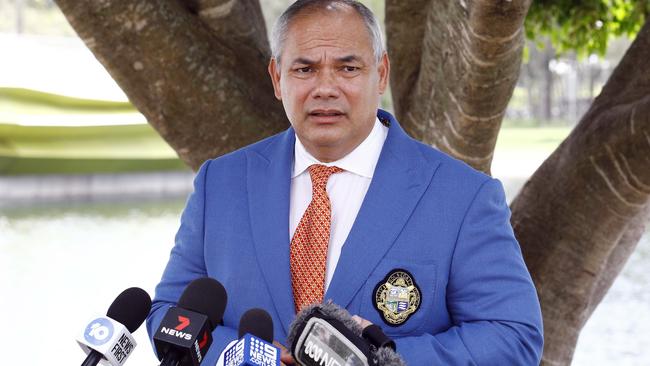
FULL DIGITAL ACCESS: JUST $1 FOR FIRST 28 DAYS
So this week Mayor Tom Tate revealed council was preparing to target Kirra, Coolangatta, Palm Beach and Bilinga for high-density development, saying the southern Gold Coast was best positioned to cater for the population influx because it would surround infrastructure such as the light rail Stage 4 extension to the airport at Coolangatta.
To which Palm Beach councillor Daphne McDonald declared her suburb would be “lost” if it was to be forced into high-density living, with children kicked “onto the streets to play”.
“It’s ludicrous because you need to have a balance between development and community space and parklands,” she said.
“What we are already seeing with high-density development is that there is no open space and kids are forced to play in the streets.”
Which is interesting considering that one of the most high-profile high-density developments in Palm Beach, Sunland’s Magnoli, actually donated a quarter of its site as a public park for local residents to enjoy.
There’s grass, covered picnic tables and a brand new playground, all sheltered from traffic and open towards the surrounding neighbourhood streets.
When I visited it was being heavily patronised by young families from nearby homes … none from Magnoli itself.
That’s not to say that every development or developer is such a good neighbour, but council could certainly make sure that this is the way of the future.
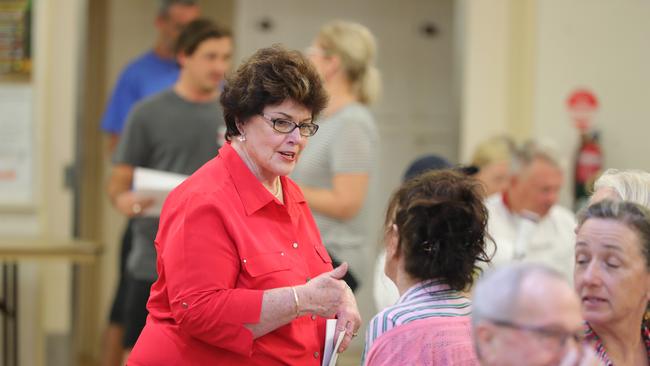
Rather than locking the door against development, let’s find a way to make it something that benefits the whole suburb. And then let’s not keep that suburb all to ourselves.
I’m no fan of over-development, but I’m also not a fan of homelessness. Let’s steer clear of either extreme and find a way to settle in the middle.
The fact is that our growing pains are not going to go away, no matter how much we ignore them … indeed, they will literally wind up on our own doorstep.
I’ve asked before and I’ll ask again … to all those residents who have lived here for years but don’t like the way the city is changing - what will your children or grandchildren do?
If we don’t develop homes for them, where will they live? It won’t be here because they won’t be able to afford it - it’s just the simple economic principles of supply and demand.
So do you have room in your heart and your suburb to make way for them? Or is this city only for the wealthy, the elite and the old?
To me, that is a far more frightening vision of the city’s future than high-density developments.
That’s why it’s time to stop making excuses and start making solutions.
Originally published as Ann Wason Moore: Truth about homelessness on Gold Coast


